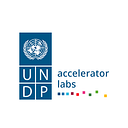A glimpse into LinkedIn data to understand Serbian labour out-migration
By Head of Exploration, Accelerator Lab Serbia
Serbia is among the world’s ten fastest shrinking populations due to its low birth rates, high out-migration and low immigration. The Organisation for Economic Co-operation and Development (OECD) projects that Serbia will lose around $9 billion as a direct result of brain drain in the science, technology, and innovation sectors. This figure is based on the number of people departing and the calculated costs of their education, as well as the fact that immigrants working in the technology sector normally earn above-average wages. Record highs in the emigration of qualified people have immediate consequences for the whole region of the Western Balkans.
Our first moonshot at the Serbia Accelerator Lab: What to do about depopulation
Unpacking the depopulation topic is one of the first areas of work of the Accelerator Lab in Serbia in response to a request from the President’s Office. The complexity of the challenge is extremely high. The Accelerator Lab is helping to produce a synthetic re-framing of this challenge.
Data exploration of the LinkedIn professional network provides a new angle to unveil the labour dynamics across countries, industries and skills. We did this to help various stakeholders in Serbia to map the skills that the country lost, plan to import certain skills to fill the skills gap or plan education programs to produce labour force with these missing skills using data that is close to real-time.
LinkedIn migration flows are unlikely to be representative of the entire migration landscape of a country, but they can shed light on some of the most dynamic and innovative sectors.
We’re hoping that LinkedIn real-time data can be very useful in development and can be used for policy-making. These data are updated more frequently than traditional government statistics, they have the unique ability to capture the latest employment and industry skills needs, which government statistics often miss, especially in the digital and disruptive technology sectors. Of course, there’s a bias in the data, but it’s still useful. LinkedIn data is best at representing skilled labour in the knowledge-intensive sectors, such as information and communication technologies, professional, scientific, and technical activities, financial and business services.
We dug into the World Bank’s LinkedIn Dataset
The World Bank Group recently published the data set extracted from employment records from 2015 to 2018 on LinkedIn. This data set was used for our analysis. The World Bank report and the Stanford University research both analysed LinkedIn data to track migration of professionals. LinkedIn Talent Solutions Team also analysed trends in Western Europe.
According to the latest data by the Statistical Office of the Republic of Serbia (July 2019), Serbia workforce stands at 2,810,500 employed, and 387,100 unemployed. The count of LinkedIn members in Serbia as of August 31st 2019 was 605,012 (~ 19 percent of the workforce).
Analysis of LinkedIn data is one of many possible ways of exploring new data for tracking migration. We are also planning to look into satellite data, mobile phone data, sensor data and web data extraction. All these insights can be complemented by those coming from ethnography and field research to ground-truth the data.
Early insights to understand brain drain
As expected, according to LinkedIn data, Germany is topping the list of the destination countries in 2018, followed by Austria, United States, United Arab Emirates, Norway and Sweden. In this dataset there are only three countries Serbia is gaining from: Bosnia and Herzegovina, Romania and Turkey.
The map below provides a visual of the country destinations for migration. The circle size is proportional to the Net Change*.
Regarding industries, research is the area where Serbia is losing most people, followed by international affairs, higher education, financial services, and internet services**.
It is alarming to see that Serbia is losing skills and not gaining any. There are no skills and no industries where Serbia is gaining (except minor gains in drilling engineering and ocean transportation, and these could be explained by annual work cycles of people from Serbia working on oil platforms and on cruise ships).
Some of the top skills being lost are genetic engineering, medicine (physical medicine and rehabilitation, physiology), dentistry, artificial intelligence, web programming etc***.
While we are moving closer to real-time data, we also understand very well that data is just the beginning. Decision making and collaboration are the ultimate goals. We are going to explore ways to incentivize high level decision-making based on these new sources of data. We’re hoping that by understanding more about out-migration dynamics, various stakeholders in Serbia might be able to use this data to target educational programs, diaspora, immigration and circular migration policies. Come back in a few weeks to find out where this data lead us!
******
Notes
*From / losing to — The net gain or loss of members from another country divided by the average LinkedIn membership of the target (or selected) country during the time period, multiplied by 10,000.
** Industries with highest out-migration from Serbia — The net loss of members from another country working in a given industry divided by the number of LinkedIn members working in that industry in the target (or selected) country, multiplied by 10,000.
***Skills Being Lost - refers to net loss of members from another country with a given skill divided by the number of LinkedIn members with that skill in the target (or selected) country, multiplied by 10,000.
*******
Drasko Draskovic is the Head of Exploration within the UNDP Accelerator Lab Serbia. You can follow him on Twitter.
Acknowledgements: With special thanks to Gina Lucarelli (UNDP), Milica Begovic (UNDP), Lejla Sadiku (UNDP), Shumin Liu (UNDP), Juni Tingting Zhu (The World Bank), for their inputs during our discussions and useful suggestions.
